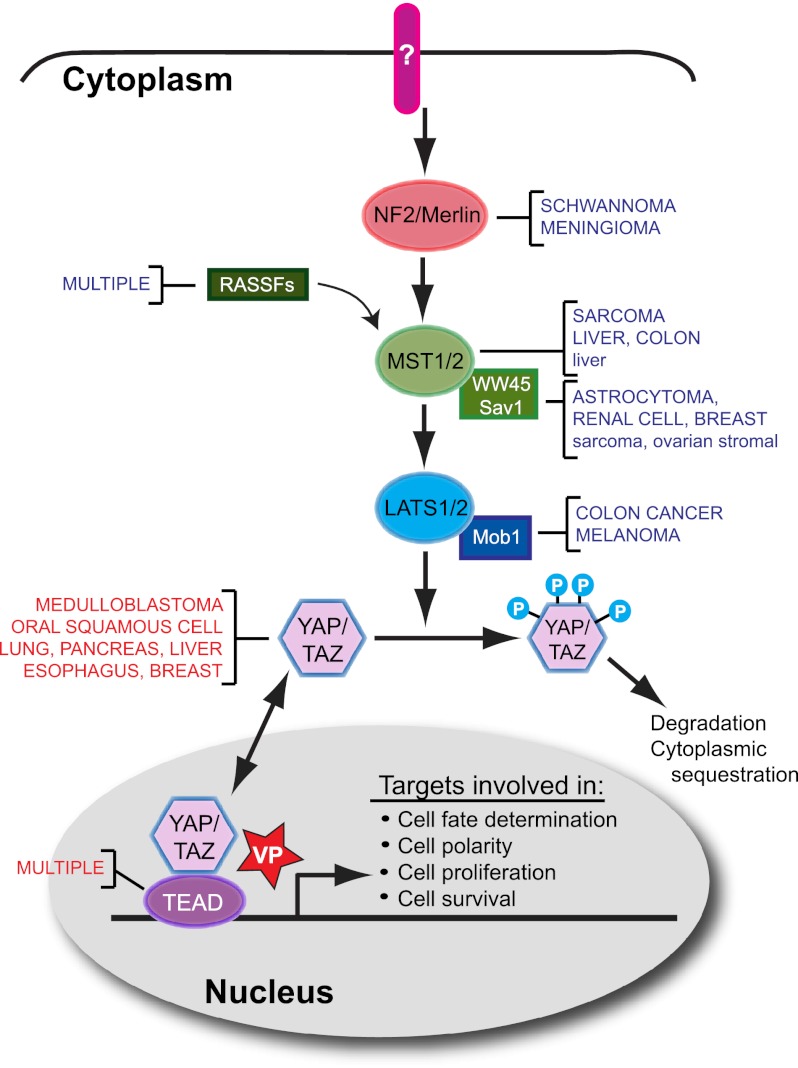Figure 1.
The mammalian Hippo pathway and cancer. A simplified view of the mammalian Hippo pathway reveals two sets of core kinases—Mst1/2 and Lats1/2—whose activity is modulated by the NF2/Merlin tumor suppressor, members of the Ras association domain family (RASSF), WW45/Sav1, and Mob1. When the pathway is “active,” phosphorylation of the YAP or TAZ transcriptional coactivators by Lats1/2 results in degradation and/or cytoplasmic sequestration, while pathway “inactivation” allows unphosphorylated YAP/TAZ to enter the nucleus and bind one of four TEAD family members, resulting in context-dependent transcriptional output. In a variety of human (uppercase) and mouse (lowercase) cancers, upstream components of the pathway are down-regulated through frank deletion (NF2) or epigenetic mechanisms (decreased expression shown in blue). YAP, TAZ, and TEAD are up-regulated in a variety of human tumors (increased expression shown in red) by mechanisms that include gene amplification and silencing of upstream components of the pathway. The porphyrin molecule verteporfin (VP) disrupts the formation of the YAP–TEAD complex by binding to YAP and changing its conformation, thereby blocking the transcription of downstream targets.

